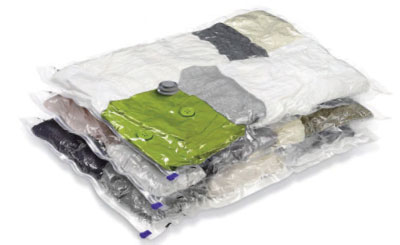By Dr. Gerald Wegner, BCE
If you suspect or know bed bugs are hiding in clean clothing, toys, books, magazines, entertainment systems, small appliances, wall hangings, small furniture, thrift store purchases, art objects, backpacks, purses, luggage, or other items being stored in paper bags and cardboard boxes, place such personal property items, along with 1 to 3 lbs. of dry ice, into large, durable plastic bags. Use 1 lb. in small bags for items such as a framed painting or a purse, 2 lbs. in medium bags for items such as a suitcase and smaller appliances, and 3 lbs. in large bags for items such as small furniture and larger entertainment systems. The carbon dioxide (CO2) from the dry ice will replace the air in the bags.
Dry ice can be purchased from local suppliers of pressurized CO2 cylinders, as well as some ice cream parlors and grocery stores. Call ahead to make sure it’s available for sale.
Place the appropriate amount of dry ice in an old pillowcase or a paper bag while wearing work gloves to enable safe handling. Dry ice must never be touched or handled with bare skin because painful freeze burns will result.
This treatment is especially effective if most of the air in the plastic bag is evacuated using the hose attachment of a vacuum cleaner or removing as much air as possible. The openings of the bags should be closed tightly with a durable, plastic-coated twist tie that allows excess CO2 to escape but will prevent air from re-entering while the bed bugs and eggs are asphyxiated.
Various brands of vacuum storage bags work well for dry ice-treatment of personal property (without sharp edges) that can fit into these bags. After placing and sealing the items in the vacuum storage bags, along with 1 lb. of dry ice per bag,
use the hose attachment of a vacuum cleaner to remove as much air as possible. As the dry ice releases the CO2, the bag(s) will reinflate, and the excess gas will vent through the one-way valve of
the evacuation port.
With little effort, a large durable plastic bag can be converted into a large vacuum storage bag by removing the evacuation port from one of the commercially available vacuum storage bags and transplanting (using clear packing tape) it over a small (1-in.-diameter) hole cut into the large plastic bag. Take care to not tear bags in use.
Independent studies (see references below) involving dry ice and/or CO2 treatment of bed bug-infested items in plastic bags reveal all the bed bugs and eggs were killed within 48 hours of exposure; however, a minimum holding time of 48 hours is recommended to ensure the CO2 will replace all of the air in the bag and permeate all containerized items thoroughly.
Dr. Wegner can be contacted at gerry.wegner@varmentguard.com.
References
Wang, Changlu, Lihua Lu and Ming Xu. 2012. “Carbon dioxide fumigation for controlling bed bugs.” Journal of Medical Entomology. 49(5):1076-1083.
Wegner, Gerald. 2013. “Control, in a vacuum.” Pest Management Professional. 81(9): 48, 50, 52.

